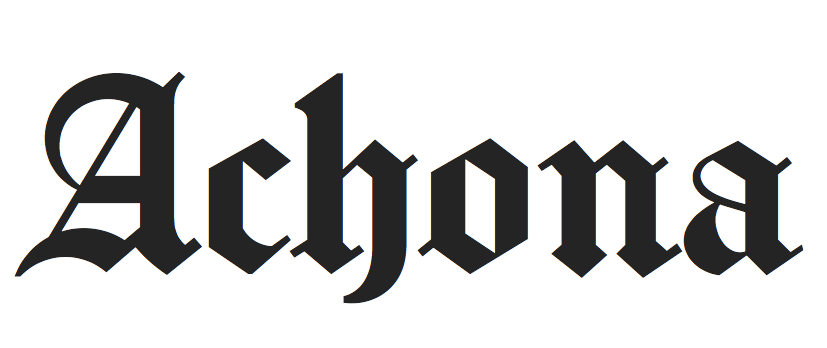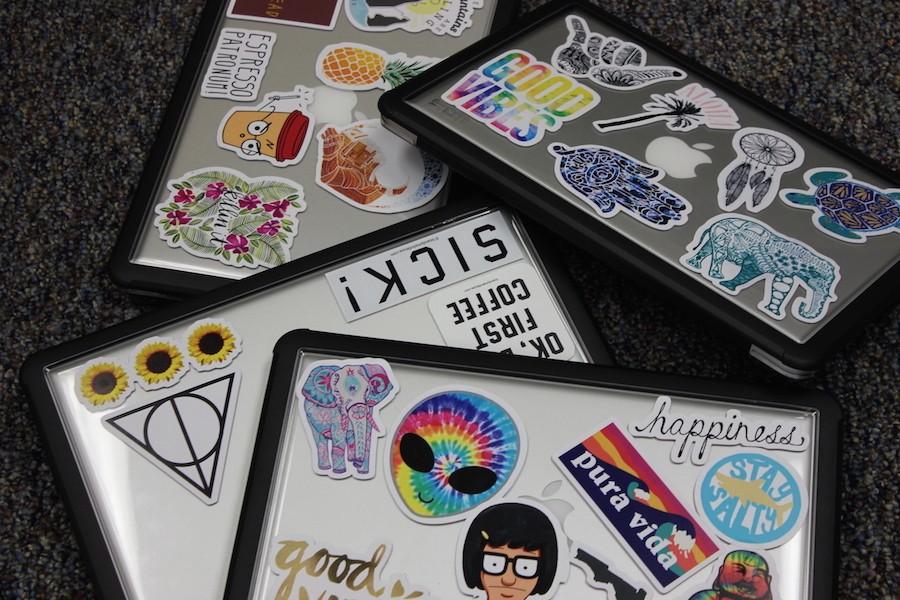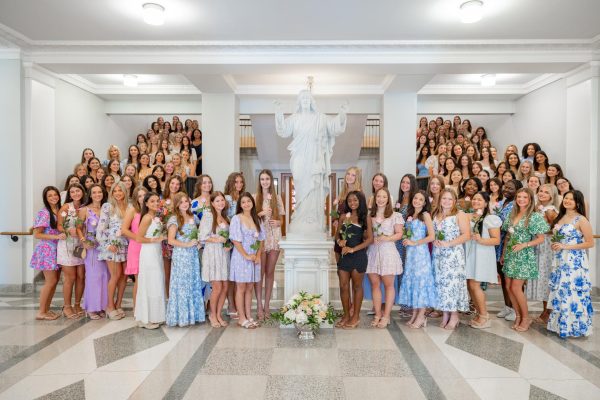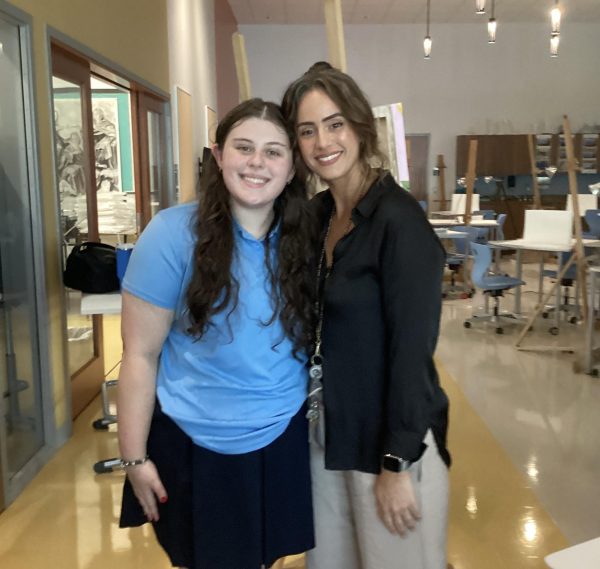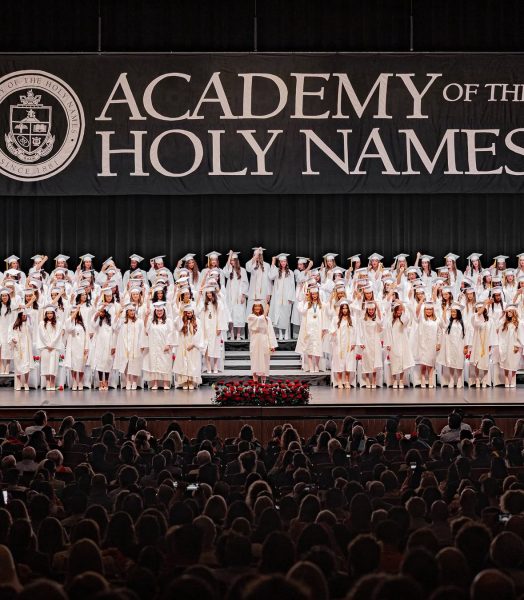The 2:1 Ratio Shapes the Future of Education
Academy girls express their individuality by personalizing their devices.
As education continues to evolve, schools everywhere are beginning to provide each student with a digital device such as a laptop or tablet in order to modernize and hopefully improve their learning experience. Once again, Academy is a step ahead of the game with the advent of the 2:1 device to student ratio in the 2015-2016 school year.
Academy’s transition to a paperless institution began in 2012 when each student was issued their own iPad prior to the first week of school. The novelty of having access to an electronic device in school was not only an exciting prospect, but also an incredibly beneficial reality. Students have since been able to condense all notes and textbooks into a single place, increasing preparedness and preventing loss of schoolwork. “When I first heard I would be getting an iPad, I was so excited because my family had never been very technology driven so it was cool to have my own device. As far as school goes, I thought that it would be a lot better for taking notes,” recalls senior Veronica Sanchez on being part of the first freshman class to get an iPad. However, Sanchez claims the iPad soon lost its charm and that she prefers her Macbook because she, “can actually efficiently type and print my notes now, which is a lot easier since I prefer paper.”
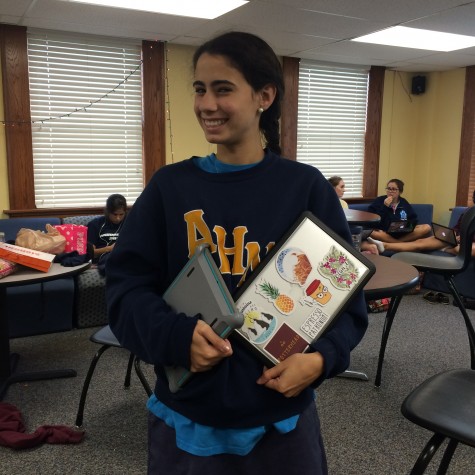
Credit: Audrey Cooper
Efficiency isn’t the only perk of digital learning. When students have access to a device, teachers can develop more interactive lesson plans that blend tradition and technology in order to engage students of all learning styles. Zack Blois from Wowzers stands by the notion that “Educational technology is obviously a major component to successful digital learning, but creating a blended learning model with teacher and peer feedback/instruction is equally vital.” Of the many new opportunities, some include student directed research, alternative course offerings and personalized learning.
With the addition of a second device this year, Academy students have twice the opportunities compared to other students that do not have a device or only have one. Technical Support Specialist, Mrs. Warnock explains that the point of implementing a second device was, “Really the evolution of technology here at AHN. The iPad’s expanded the students learning, but still had their limitations. The combined use of the iPad and the MacBooks really opened up new avenues of technology integration and learning in the classroom and beyond.” The students have been quick to adapt, and are using both devices to maximize their classroom experience. Sophomore Hailey Eckermann states, “ It’s exciting to have tools to make it easier to study and complete school work,” regarding having access to both her iPad and MacBook during class. She adds, “At first, I did not see the need for another device because the ipad seemed to be sufficient. I now see benefits of having two devices. I can use my macbook to write essays and type assignments while using my ipad for ebooks without having to close in and out of screens.” In a classroom full of digital natives, innovation like this is entirely necessary.
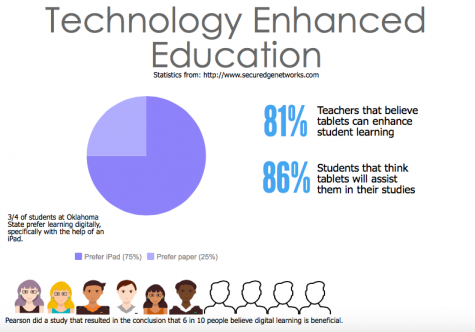
Credit: Audrey Cooper
According to the Academy website, “The Academy is committed to educating students who are effective communicators and collaborators; globally aware, independent, confident and responsible learners and citizens; critical and creative thinkers, innovators and problem solvers.” Certainly, the inclusion of the second device per student is the first step towards achieving this goal.

First year Senior Staff Writer Audrey Cooper is excited to be a part of ACHONA her senior year. She is involved in numerous clubs and sports (Cooper is President...

